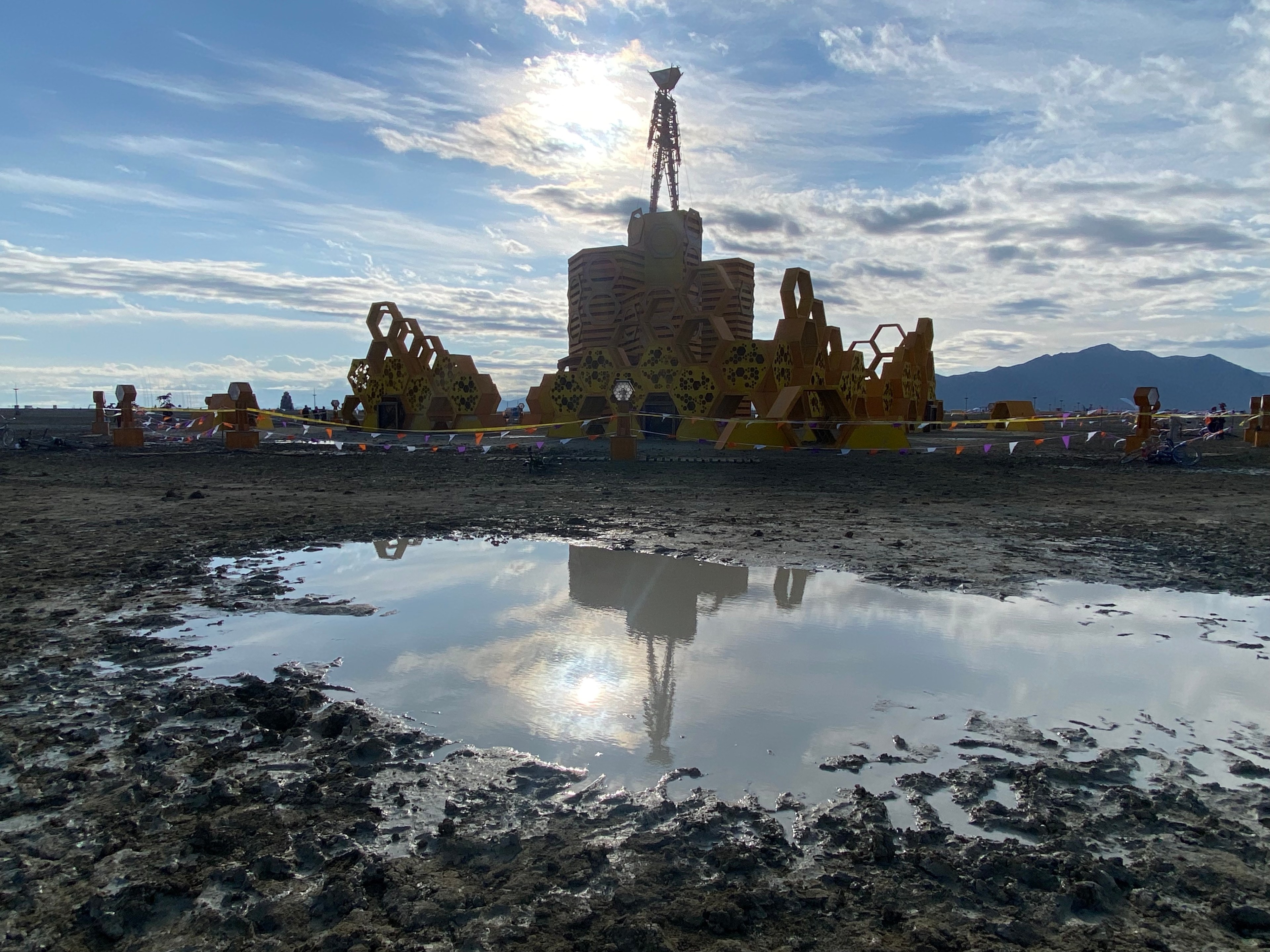After a historically wet Burning Man left the playa caked with mud, many wonder what the state of Black Rock City will be after the exodus—with trash and debris likely stuck in the mud.
One of Burning Man’s founding principles is “leave no trace.” This means Burners must dismantle their camps and dispose of any trash responsibly, which often means carrying refuse out of Black Rock Desert and dropping it off at a Burner-friendly waste management facility.
“Stipulations of the Special Recreation Permit require the Burning Man organization to return the playa to its natural state, and the restoration crew they have doing that does an outstanding job,” U.S. Bureau of Land Management spokesperson John Asselin said.
Burning Man has partnered with the land-management bureau for over 15 years for the use of five square miles of Black Rock-High Rock National Conservation Area, and the federal agency collects around $750,000 in permit fees in exchange.
As for the trash left behind, the Burning Man Project refers to this as MOOP, or “matter out of place.” According to the Burning Man website, MOOP can be things like bicycles, furniture, art, trash, bottles, cans, cigarette butts, fireworks, glow sticks, bottle caps, wood and plastic debris.
The organization has a dedicated crew of volunteers called the Playa Restoration Team to carry out the entire cleanup.
After exodus—when Burners leave the site—the team has three weeks to plot the whole site out under a grid system. They then pick up trash, rake through the land with trucks to smooth out bumps and ruts and clean up along the highway near Black Rock City, according to Asselin.
The Burning Man Project also publishes an annual MOOP Map that displays where the highest density of MOOP is found in the camp area. Last year, tent stakes/lag bolts were the most serious MOOP offender with 1,023 recorded instances.
“The excessive heat, punishing winds, blinding dust storms burying MOOP, early departures, and fatigue were all factors” for the excessive amounts of MOOP, according to a blog post published to the Burning Man website.
After the cleanup, which takes place the first week of October, Asselin said the bureau inspects random points on the playa to determine if restoration is acceptable and if further cleanup is needed.
